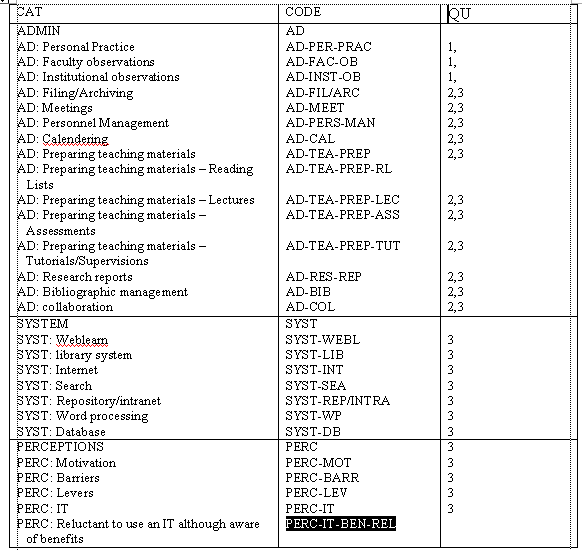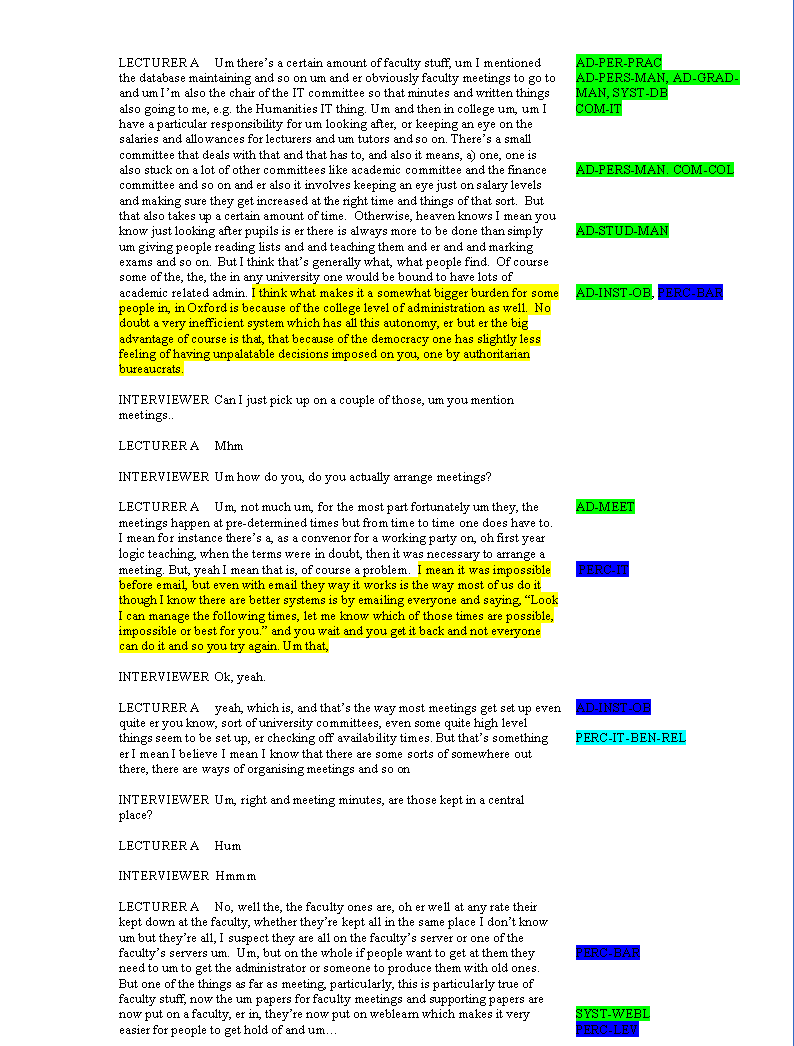Interview data piles up quickly and it's difficult to know what matters more, in the early stages it seems that everything matters! It is important to think in conceptual frameworks when looking at and analysing interview data, refering back constantly to research questions. Its a good idea to get interviews transcribed, if not all then at least a few so you can carefully come to understand the data you are collecting and the categories that emerge from it. It is incredibly important to record your interviews, otherwise you run the risk of analysing the interview data when you are actually in the process of interviewing - only noting down responses that you feel are important. Certain topics of interest may emerge much further down the line that you will not be able to refer back to.
The CRT have been using the following methods to analyse their interveiw data
Keep a contact summary sheet
This consists of name, date, location and the main issues or themes that struck you in this contact, what new questions might you have in considering you next interviews?
Write a summary within 24 hours
Unless you are getting an interview transcribed (whereby this can wait longer), write a breif summary of the interview covering the main topics discussed. The CRT have collated these in a scenarios database.
For more indepth analysis use a coding approach
Codes are tags or labels for assigning units of meaning to the descriptive or inferential information compiled during research. Codes are usually attatched to "chunks" of various size - words, sentences, paragraphs. Codes are used to retrieve adn organize these chunks so the researcher can quickly find and pull them out of the data.
There are three main types of code.
- Descriptive codes (events / beliefs)
- Interpretive codes (reasons underlying events / beliefs)
- Pattern codes (illustrate emergent motive or letimotive behind reasons)
It's a good idea to create a provisional start list of codes prior to fieldswork -this list will come from your resaerch questions, hypotheses, problem areas ect. This is only a start list as more codes will be discovered through analysis and single categories broken down through analysis. An example of a Start List of Codes used to code the admin burden can be found below.

Below is a section of an interview transcrip coded using the above codes. Highlighted green codes denote descripive codes, dark blue interprtive codes and turquoise, pattern codes. Highlisted yellow text are usefuk quotes.
